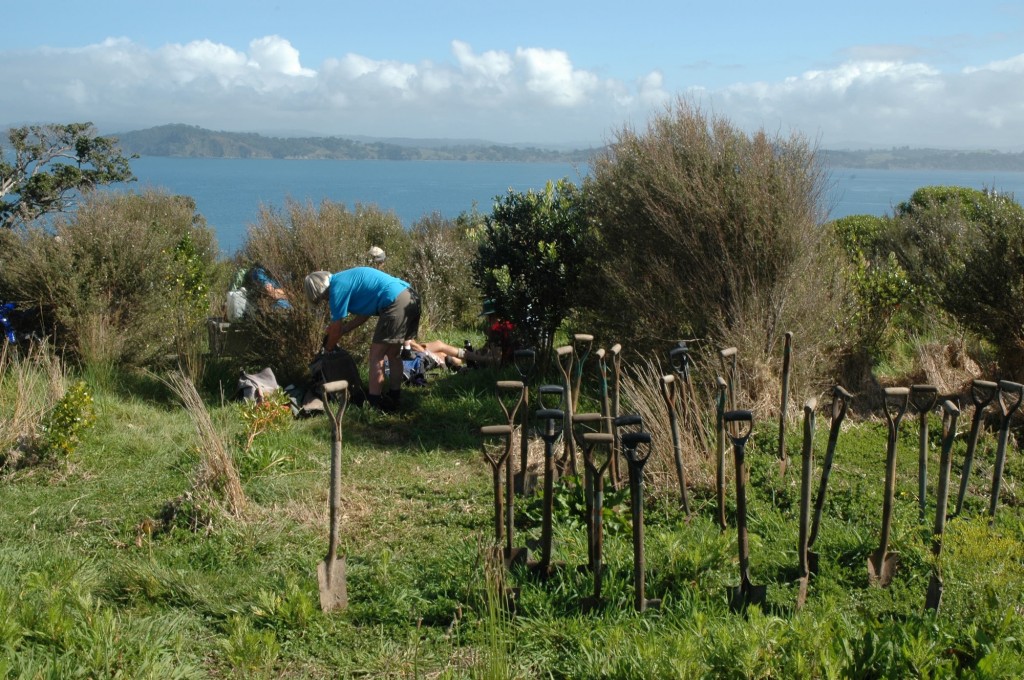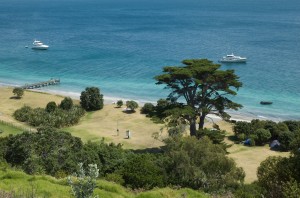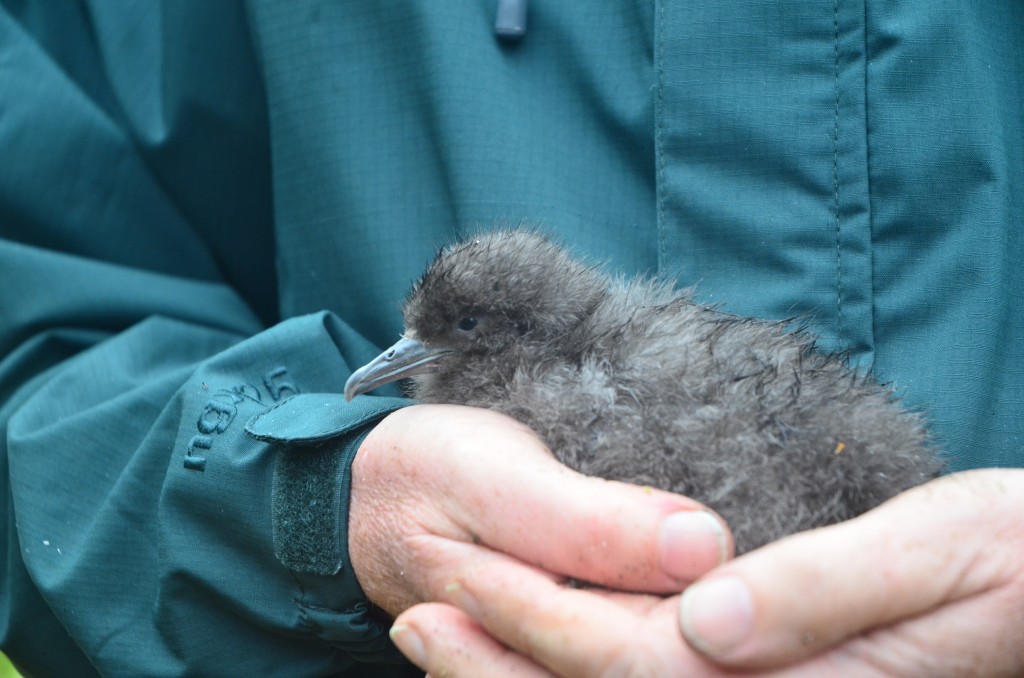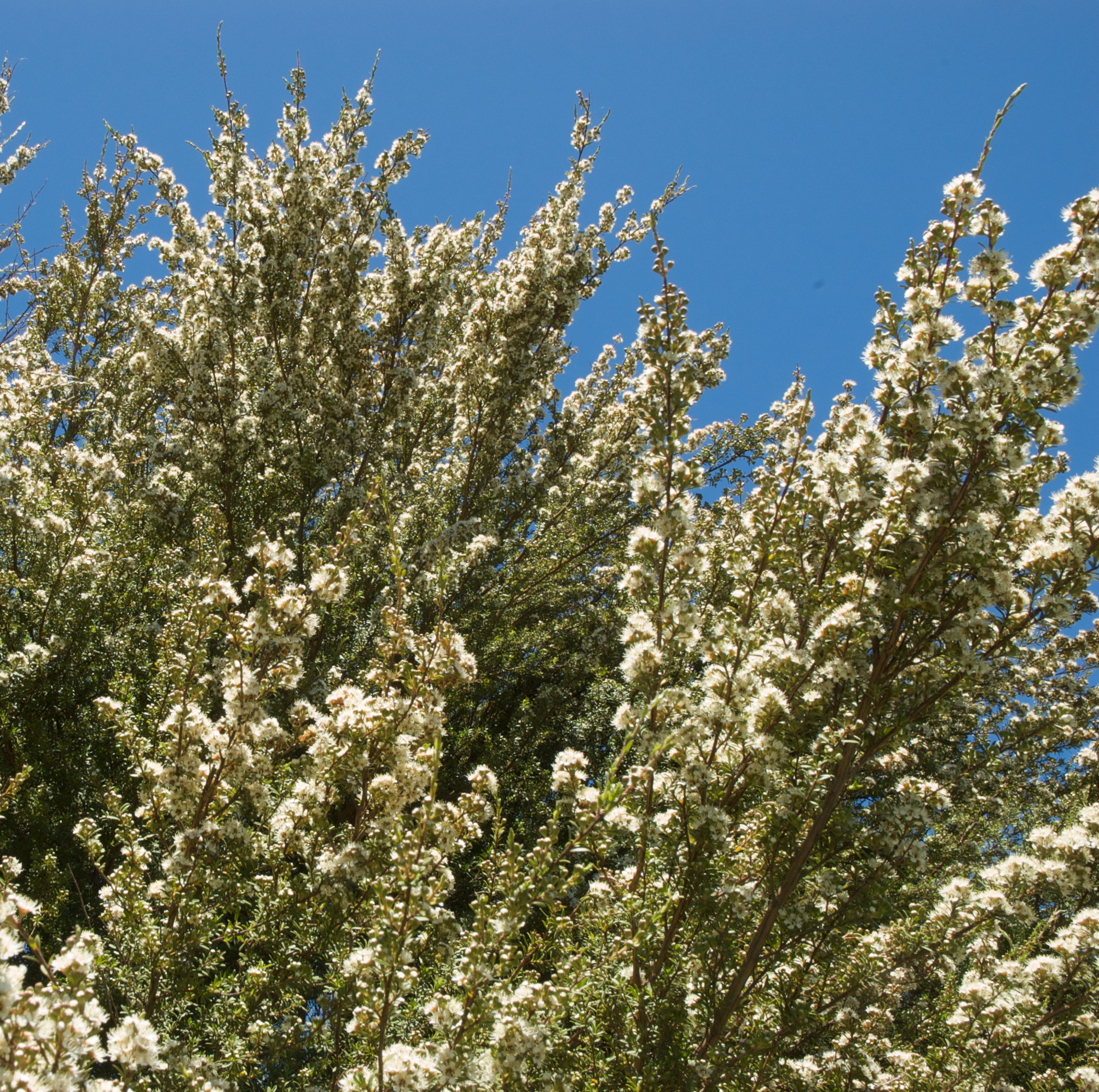Motuora is an 80-hectare island in the Hauraki Gulf, New Zealand. The island reserve lies five kilometres east of Mahurangi Heads, north of Auckland. Motuora has a long history of human occupation and was used for pastoral farming through most of the last century. Much of the original coastal forest was cleared long ago leaving only remnant pohutukawa and karo/mahoe scrub growing on coastal cliffs. In 1965 the Island was bought by the Government for a recreation reserve, but in 1990 a volunteer-led ecological restoration programme began.

Volunteers taking a break from planting
Restoration efforts gained momentum in 1995 with the formation of the Motuora Restoration Society (MRS). The Society now jointly manages the island with the Department of Conservation (DOC). The major focus of the restoration project so far has been re-establishing native forest cover on the island. Since 1995 some 300,000 native seedlings, raised in the island nursery, have been planted out by volunteers during the winter months. Weed control is also important and an on-going weed control programme is in place.
Although most of the understorey planting is now complete there is still infill and canopy planting to be done as well as seed gathering, pricking out seedlings, weeding and general maintenance tasks.

Home Bay from Kiwi Track
Motuora is special, not just for its secluded picnic spots and clear waters, but for the fact that it has remained free of mammalian predators despite the island’s long history of occupation and farming. There are no rats, mice, mustelids (stoats, ferrets or weasels) or feral cats. This makes Motuora ideal for native ecosystem restoration and for the creation of a safe habitat for endangered species. Since 1999 Motuora has been used as a “kiwi creche“ by Operation Nest-Egg, and in 2006 Duvaucels geckos and shore skinks were released on the island. Diving petrel chicks were also translocated to the island between 2007 and 2009 and in 2010 wetapunga were also brought to the Island. Since then 100 Pycroft’s petrels have been translocated to Motuora with evidence of some birds returning. Also Australian gannets have established a small colony on Motuora in response to decoy and sound attractors. Similarly, fluttering shearwater chicks have been reared in burrows located near speakers broadcasting their cries. (2015)
As from March 2016 the day-to-day management of Motuora returned to the Department of Conservation. However the Motuora Restoration Society continues to oversee the restoration of flora and fauna on Motuora all of which depends on public support for volunteers and much needed funds.


